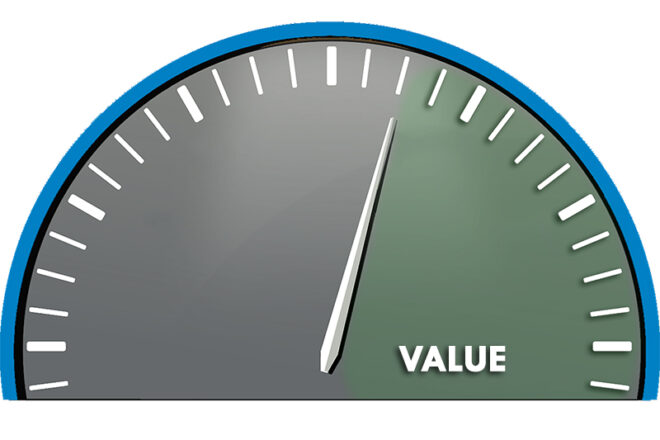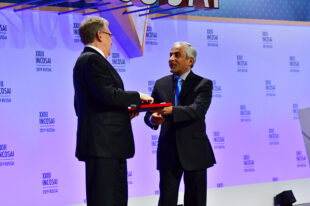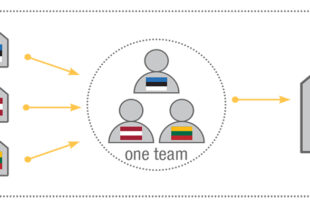Performance Audits to Communicate, Incorporate, Better Serve Stakeholders

by Sali Agaj and Redi Ametllari, Albanian Supreme Audit Institution
“You must run to keep in place. If you want to get somewhere else, you must run at least twice as fast as that.”—Red Queen theory of evolution.
Traditionally, audits, based on accounting standards, have focused on financial statement accuracy and regularity. In the area of public audit, the traditional approach also verifies the implementation of laws and financial rules. This method prevailed for centuries until the 1970s, at which time legislative bodies of some advanced industrial nations began to ask, “Did we gain value for money spent?”
When public funds are expended in accordance with laws and financial frameworks, it doesn’t necessarily equate to adding value and benefits to the lives of citizens.
This notion was highlighted during Albania’s Supreme Audit Institution’s (ALSAI) 4th Scientific Conference on Risk Analysis, where Igor Soltes, former President of the Slovenian Court of Accounts, shared a story that illustrated the disconnect between public resource use and public value.
“The tiny settlement of Sutera, tucked away in the mountains of Sicily, received a generous grant from the European Union to boost tourism by building an elevator linking the village to a hilltop monastery. However, the elevator has never functioned, because the local council cannot afford the 100,000 euro in annual operating costs,” Soltes explained.
Performance audits, which aim to provide citizens with new information and trace final destinations of money spent, theoretically share a common purpose with public institutions—to better serve the citizens.
Yet, in practice, serving the citizens can be difficult. As Supreme Audit Institutions (SAIs), achieving this shared purpose means overcoming challenges associated with the auditing field, technicalities that make communicating with and incorporating stakeholders crucial SAI activities.
An auditor’s vocabulary, often referred to as audit speak, can be difficult for citizens to understand. It is important for SAIs to provide reports that are comprehensive, clear and concise. ALSAI has taken steps to communicating in a more meaningful way by “translating” reports using less complex, more understandable language. ALSAI has gone a step further by transforming written reports into visual stories to convey audit findings in an aesthetic, user-friendly way.
Establishing a new communication standard with auditees can also prove beneficial. Creating synergy between the SAI and organization being audited results in a much more impactful report.
For instance, during introductory meetings with senior level authorities, ALSAI auditors no longer ask, “What has been done wrong?” Instead, we ask, “What can we improve?”
Developing partnerships with media provides a direct path to communicating audit work and audit results with citizens. It also demonstrates transparency, which enhances SAI credibility and strengthens stakeholder relations and trust.
While financial and compliance audit topics typically stem from mandates, performance audit topics often originate from citizens and social problems facing the nation. Transcending the chain of numerous laws and processes to focus directly on the epicenter of social issues has expanded ALSAI’s spectrum of audit topics—those once unreachable by other forms of audit.
Performance audit topic flexibility has also resulted in extraordinary teamwork opportunities and closer contact with stakeholders. No longer positioned in cooperative “outskirts,” stakeholders have become central to audit work. Some recent
ALSAI examples include:
- Collaborative work with the United States Agency for International Development (USAID). After signing a cooperation agreement to implement a “Transparency in the Health System” project, ALSAI performance auditors and USAID experts engaged in a joint audit specifically to address medical emergencies in Albania. Relations were further strengthened through several USAID-organized workshops.
- Cooperative work with Non-Governmental Organizations (NGOs). The Friedrich Ebert Foundation, an NGO, included ALSAI in a project where ALSAI conducted a performance audit on “Quality of Student Services in Public Universities.” ALSAI implemented direct communication mechanisms with stakeholders (students) as part of the performance audit, which provided value feedback leading to improved audit work and reports having greater impact.
- ALSAI’s performance audit on the state of affairs for former politically persecuted personnel provided an opportunity for direct engagement with citizens. The audit work resulted in gaining trust and credibility with society, and a post-audit conference united relevant institutions and various NGOs to discuss the findings and means to address them.
Service to citizens must not solely be measured on producing audit products. Stakeholder accessibility throughout audit work (from beginning to end) and communicating this work are essential to enhancing a SAI’s ability to provide value and benefits to citizens.
Conceived as an intellectual and working philosophy, performance auditing in ALSAI, now in its seventh year, has become a marathon fleet designed to reach modern day capabilities of European affiliates.
ALSAI Chairman, Bujar Leskaj, believes it is a philosophy that “considers oversight not a purpose in itself. Performance auditing is an instrument to prevent corruption, and can be used as a counseling tool for the auditee.”
Performance auditing comes with no framework. It is merely a sketch that needs a little history and some literature to fully shape it. It is a practice that extends beyond a SAI’s boundaries. It constitutes a national reform through its introduction of a new managerial approach—an approach that lends itself to efficiency, flexibility, change.





